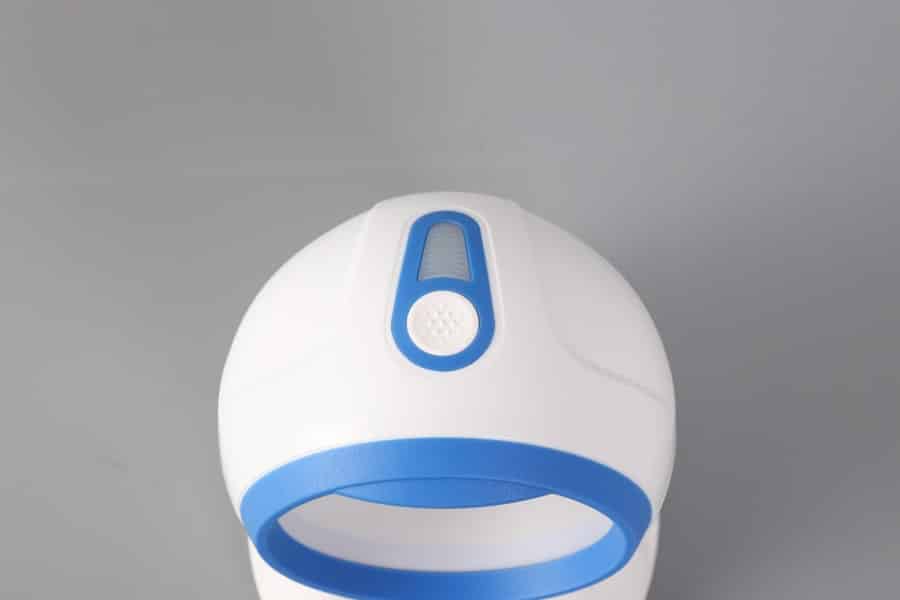In the rapidly evolving landscape of healthcare, effective inventory and asset management has emerged as a critical component for operational efficiency and patient care quality. The healthcare sector is characterized by a vast array of medical supplies, equipment, and pharmaceuticals that must be meticulously tracked and managed. Poor inventory management can lead to stockouts, overstocking, and ultimately, compromised patient care.
For instance, a hospital that runs out of essential surgical supplies may face delays in procedures, resulting in negative patient outcomes and increased operational costs. Moreover, the financial implications of inefficient inventory management are significant. According to industry reports, healthcare organizations can lose millions annually due to waste, theft, and mismanagement of assets.
As healthcare providers strive to enhance their service delivery while controlling costs, the importance of robust inventory and asset management systems cannot be overstated. These systems not only ensure that the right products are available at the right time but also facilitate compliance with regulatory standards, thereby safeguarding both patient safety and organizational integrity.
Key Takeaways
- Effective inventory and asset management is crucial for healthcare facilities to ensure the availability of essential supplies and equipment.
- Key features to look for in medical inventory and asset management software include real-time tracking, automated alerts, and integration with existing systems.
- Best practices for implementing and integrating inventory and asset management software in healthcare facilities include thorough training, regular audits, and clear communication with staff.
- Utilizing data analytics and reporting tools can help healthcare facilities optimize inventory levels, reduce waste, and improve cost-efficiency.
- Streamlining procurement and replenishment processes with inventory and asset management software can lead to better supply chain management and cost savings for healthcare facilities.
Key Features to Look for in Medical Inventory and Asset Management Software
When selecting medical inventory and asset management software, healthcare organizations should prioritize several key features that enhance functionality and usability. First and foremost, real-time tracking capabilities are essential. This feature allows healthcare providers to monitor inventory levels continuously, ensuring that critical supplies are always available when needed.
Additionally, the software should support barcode scanning or RFID technology to streamline the tracking process and reduce human error. Another important feature is integration with existing healthcare systems, such as Electronic Health Records (EHR) and procurement platforms. Seamless integration ensures that data flows smoothly between systems, providing a comprehensive view of inventory levels and usage patterns.
Furthermore, user-friendly interfaces are crucial for ensuring that staff can easily navigate the software without extensive training. Customizable dashboards that provide insights into inventory performance metrics can also empower decision-makers to make informed choices regarding procurement and resource allocation.
Best Practices for Implementing and Integrating Inventory and Asset Management Software in Healthcare Facilities

Implementing inventory and asset management software in healthcare facilities requires a strategic approach to ensure successful integration and adoption. One best practice is to involve key stakeholders from various departments early in the process. Engaging clinical staff, procurement teams, and IT professionals can provide valuable insights into specific needs and challenges, fostering a sense of ownership and collaboration throughout the implementation phase.
Training is another critical aspect of successful software integration. Comprehensive training programs should be developed to equip staff with the necessary skills to utilize the new system effectively. Ongoing support and resources should also be made available to address any questions or challenges that may arise post-implementation.
Additionally, establishing clear protocols for data entry and inventory management can help maintain data integrity and accuracy, which are vital for effective decision-making.
Utilizing Data Analytics and Reporting Tools for Optimizing Inventory and Asset Management
| Metrics | Current Value | Target Value |
|---|---|---|
| Inventory Turnover Ratio | 4.5 | 5.0 |
| Asset Utilization Rate | 85% | 90% |
| Stockout Rate | 2% | 1.5% |
| Inventory Accuracy | 95% | 98% |
Data analytics plays a pivotal role in optimizing inventory and asset management within healthcare settings. By leveraging advanced analytics tools, organizations can gain valuable insights into usage patterns, demand forecasting, and inventory turnover rates. This data-driven approach enables healthcare providers to make informed decisions regarding stock levels, reducing waste and ensuring that critical supplies are always on hand.
Reporting tools integrated into inventory management software can also facilitate compliance with regulatory requirements by providing detailed records of inventory transactions. For example, hospitals can generate reports that track the usage of controlled substances, ensuring adherence to regulations while minimizing the risk of diversion. Furthermore, predictive analytics can help organizations anticipate future needs based on historical data, allowing for proactive procurement strategies that align with patient care demands.
Streamlining Procurement and Replenishment Processes with Inventory and Asset Management Software
Efficient procurement and replenishment processes are essential for maintaining optimal inventory levels in healthcare facilities. Inventory management software can automate these processes by generating purchase orders based on predefined thresholds or usage patterns. This automation not only saves time but also reduces the likelihood of human error in ordering supplies.
Additionally, integrating supplier management features within the software can enhance procurement efficiency. By maintaining a centralized database of suppliers, healthcare organizations can easily compare pricing, track order histories, and evaluate supplier performance. This streamlined approach not only ensures timely replenishment of essential items but also fosters better relationships with suppliers through transparent communication and efficient order processing.
Ensuring Regulatory Compliance and Traceability with Inventory and Asset Management Software

Ensuring Traceability
Inventory and asset management software provides robust traceability features that enable organizations to track the movement of products throughout their lifecycle, from procurement to patient administration. This allows healthcare providers to maintain a comprehensive record of inventory transactions, which is essential in the event of a product recall.
Streamlining Regulatory Inspections
Audit trails within the software provide the necessary documentation for regulatory inspections, demonstrating adherence to compliance standards. This helps healthcare organizations to mitigate risks associated with non-compliance and enhance patient safety.
Prioritizing Patient Safety
By prioritizing traceability through effective inventory management practices, healthcare organizations can reduce the risks associated with non-compliance. This, in turn, enhances patient safety and ensures that healthcare providers are well-equipped to respond quickly and effectively in the event of a product recall or other compliance-related issues.
Maximizing Efficiency and Cost Savings through Automation and Workflow Optimization
Automation is a key driver of efficiency in healthcare inventory management. By automating routine tasks such as stock level monitoring, order generation, and reporting, organizations can free up valuable staff time for more strategic activities. This shift not only enhances productivity but also reduces the likelihood of errors associated with manual processes.
Workflow optimization is another critical aspect of maximizing efficiency. By analyzing existing workflows related to inventory management, healthcare organizations can identify bottlenecks or redundancies that hinder performance. Implementing streamlined processes supported by inventory management software can lead to significant cost savings by minimizing waste and improving resource allocation.
For example, hospitals that optimize their supply chain processes may experience reduced holding costs while ensuring that essential items are readily available for patient care.
Case Studies and Success Stories of Healthcare Facilities that have Optimized their Inventory and Asset Management with Software Solutions
Numerous healthcare facilities have successfully implemented inventory and asset management software solutions to enhance their operational efficiency and patient care quality. For instance, a large metropolitan hospital reported a 30% reduction in supply costs after adopting an automated inventory management system that provided real-time tracking capabilities. By leveraging data analytics tools within the software, the hospital was able to identify trends in supply usage, leading to more informed purchasing decisions.
Another success story comes from a regional healthcare network that integrated its inventory management system with its EHR platform. This integration allowed for seamless communication between clinical staff and supply chain teams, resulting in improved coordination during surgical procedures. The network reported a significant decrease in surgical delays due to supply shortages, ultimately enhancing patient satisfaction scores.
In conclusion, effective inventory and asset management is essential for optimizing operations within healthcare facilities. By leveraging advanced software solutions that incorporate real-time tracking, data analytics, automation, and compliance features, healthcare organizations can enhance their efficiency while ensuring high-quality patient care. As the industry continues to evolve with emerging technologies such as artificial intelligence and machine learning, the potential for further optimization in inventory management will only increase.
Healthcare professionals and IT decision-makers must prioritize these solutions to stay ahead in an increasingly competitive landscape while delivering exceptional care to patients. Key Takeaways:
– Effective inventory management is crucial for operational efficiency and patient safety.
– Key features of inventory management software include real-time tracking, integration capabilities, and user-friendly interfaces.
– Best practices for implementation involve stakeholder engagement, comprehensive training, and clear protocols.
– Data analytics tools provide valuable insights for optimizing inventory levels and ensuring regulatory compliance.
– Automation streamlines procurement processes while workflow optimization enhances overall efficiency.
– Real-world case studies demonstrate the tangible benefits of adopting advanced inventory management solutions in healthcare settings.
Medical Inventory and Asset Management Software is crucial for healthcare facilities to efficiently track and manage their supplies and equipment. A related article that discusses the importance of maximizing efficiency in a different sector is How Cloud Computing Maximizes Efficiency in the Legal Sector. This article highlights how cloud computing can streamline operations and improve productivity in the legal industry, similar to how medical inventory software can benefit healthcare organizations.
FAQs
What is medical inventory and asset management software?
Medical inventory and asset management software is a specialized system designed to help healthcare facilities track and manage their medical supplies, equipment, and other assets. It provides features such as inventory tracking, expiration date management, order management, and asset tracking to ensure efficient and accurate management of medical resources.
What are the benefits of using medical inventory and asset management software?
Some of the benefits of using medical inventory and asset management software include improved inventory accuracy, reduced risk of stockouts and expired supplies, streamlined procurement processes, better compliance with regulatory requirements, and increased overall efficiency in managing medical resources.
How does medical inventory and asset management software work?
Medical inventory and asset management software typically utilizes barcode or RFID technology to track and manage medical supplies and equipment. It allows users to input and update inventory data, set reorder points, track usage, and generate reports to gain insights into inventory levels and usage patterns.
What features should I look for in medical inventory and asset management software?
When choosing medical inventory and asset management software, it’s important to look for features such as barcode scanning capabilities, expiration date tracking, automatic reorder alerts, integration with other systems (such as electronic health records), customizable reporting, and user-friendly interface for easy adoption by healthcare staff.
Is medical inventory and asset management software compliant with industry regulations?
Many medical inventory and asset management software solutions are designed to be compliant with industry regulations such as FDA requirements for tracking medical devices and supplies. It’s important to verify that the software you choose meets the necessary regulatory standards for your specific healthcare setting.
Can medical inventory and asset management software integrate with other healthcare systems?
Yes, many medical inventory and asset management software solutions offer integration capabilities with other healthcare systems such as electronic health records (EHR), procurement systems, and accounting software. This integration helps streamline processes and ensure accurate and up-to-date data across different systems.


